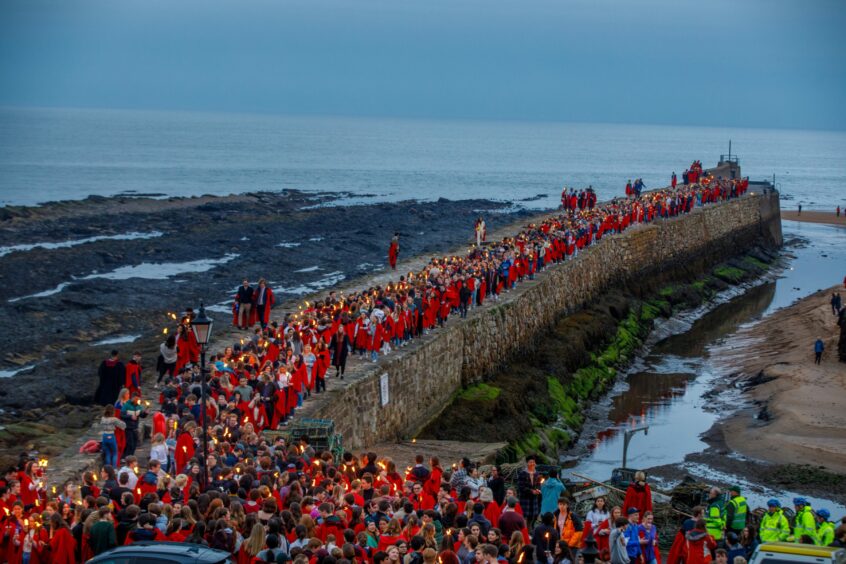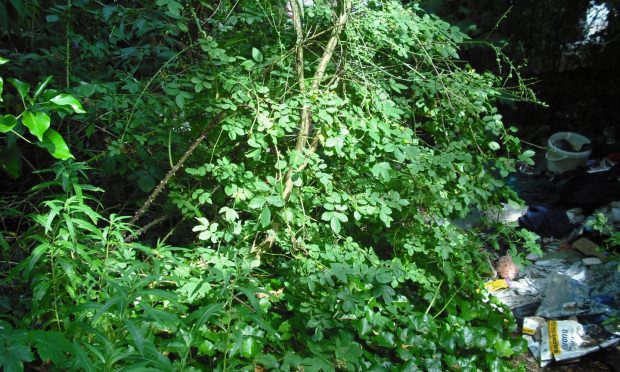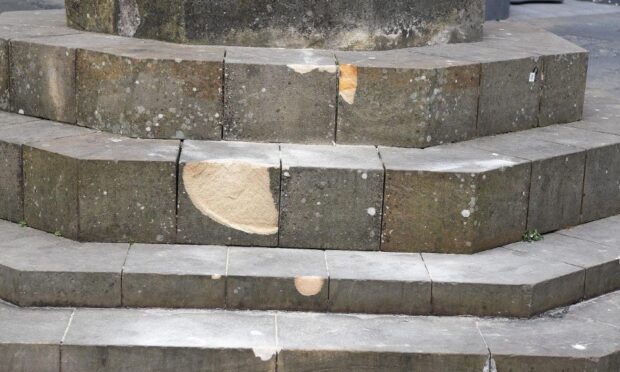Hundreds of St Andrews students braved the chilly waters of the North Sea for their annual May Day dip this morning.
Hoping for good luck in their exams, the students gathered on East Sands beach at dawn before taking to the water.
The hugely popular tradition dates back to the 1800s, when student John Honey rescued the crew of the Janet of Macduff which had run aground off the East Sands.
Honey is commemorated every year after he bravely rescued five crew members of the stricken vessel who were stranded in the water and unable to make it to safety.
Every year, students process by candlelight, led by a piper, to the East Sands where they lay a wreath at the site of the shipwreck.
The following morning at dawn, students from the university head out into the water as part of a tradition thought to bring luck during exams and cleanse any academic sins.
This year marks the first time since 2019 that the normally annual event took place due to the coronavirus pandemic.
Who is John Honey, the hero of St Andrews University?
John Honey, then aged 19, was attending a church service at St Salvator’s Chapel in St Andrews on January 5 1800 when news broke of that the Janet of Macduff just outside the harbour.
No lifeboat crew were stationed in the town at the time, and the crew of the boat looked certain to drown before John Honey stepped in.
The student rushed to the beach, tying a rope around his waist and handing it to his fellow students.
Swimming out into the freezing sea and boarding the fast sinking boat, Honey realised the crew were too exhausted to make it back to shore alone.
He then made six separate journeys, each time carrying one of the survivors with him to safety. During his final trip, Honey was struck across the chest by the ship’s falling mast.
Exhausted and injured, he collapsed on the beach as Scotland learned the news of his astonishing bravery.
In recognition of his act of selflessness, Honey, who survived, was awarded the Freedom of the Cities of St Andrews, Perth, Forfar and Auchtermuchty.
Honey went on to become the Minister of Bendochy in Perthshire in 1812, before sadly dying two years later aged just 32.
Many believe that the injury sustained on his fifth rescue trip had stayed with him, eventually contributing to the tuberculosis which killed him.
















